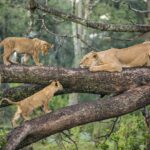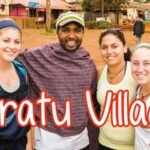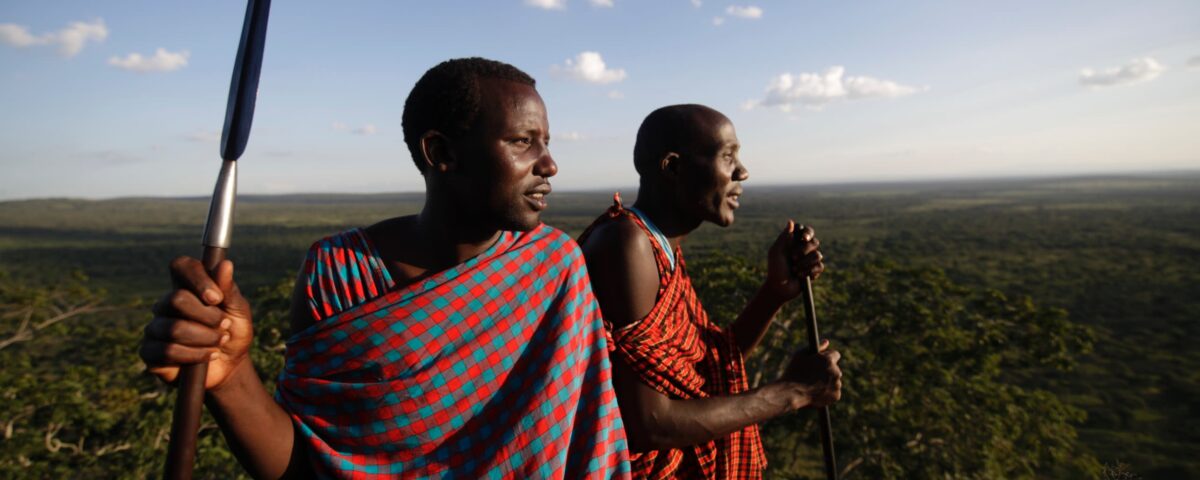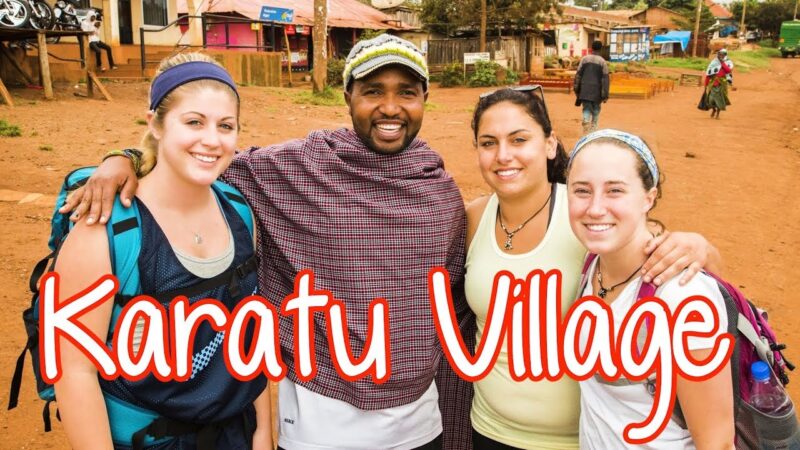
Explore Tarangire National Park: The Land of Elephants and Baobabs
November 11, 2025
Explore Karatu- Tanzania’s Coffee Town.
November 12, 2025When people think of Tanzania, they often picture the wide Serengeti plains, lions resting under acacia trees, or elephants crossing rivers at sunset. But the soul of Tanzania isn’t found only in its landscapes it lives in its people. And few experiences capture that spirit more vividly than a visit to a Maasai boma, a traditional homestead of one of East Africa’s most iconic communities.
What Is a Maasai Boma?
A boma is a circular village made up of small, mud-and-stick huts surrounded by a thorny fence that keeps livestock safe at night. Each hut is built by the women of the community using local materials a true reflection of strength, skill, and tradition.
Inside, you’ll find warmth, simplicity, and a sense of unity. The huts may be small, but they represent generations of heritage passed down through stories, songs, and shared experiences.

The Arrival: A Warm Maasai Welcome
When you arrive at a Maasai boma, you’re welcomed not as a tourist, but as a guest. The Maasai greet visitors with smiles and traditional dances rhythmic, energetic, and full of meaning.
Men often perform the “Adumu”, the famous jumping dance, where warriors leap high into the air as a show of strength and pride. Women join in with melodious singing and graceful movements, their beaded necklaces swaying in colorful harmony.
The dances aren’t just for show they’re expressions of joy, unity, and storytelling. Each song has a purpose: to celebrate, to honor, or to welcome.
Learning About Maasai Life
After the dance, a community elder or guide will often share stories about Maasai life, beliefs, and traditions. You’ll learn that the Maasai are semi-nomadic pastoralists, known for herding cattle, goats, and sheep. For them, cattle are not just animals they are a source of food, wealth, and identity.
Education, health, and cultural preservation are all important topics today, as the Maasai balance modern life with their traditional ways. Many communities now send their children to school while still maintaining their deep cultural roots.
Visitors can also join in simple activities like learning how to start a fire the traditional way, milking cows, or practicing how to throw a spear (safely, of course!).
Crafts, Beadwork, and the Colors of Maasai Culture
One of the highlights of a visit is exploring Maasai crafts, especially their world-famous beadwork. Each color in the bead designs carries meaning:
-
Red represents bravery and strength.
-
Blue symbolizes the sky and the life-giving rains.
-
White stands for purity and milk.
-
Green reflects the land and nourishment.
-
Orange and Yellow represent warmth and hospitality.
You’ll find beautifully crafted necklaces, bracelets, and earrings for sale. Buying directly from the artisans is a wonderful way to support the community your purchase helps fund education, healthcare, and daily needs.

The Role of Cattle in Maasai Culture
It’s impossible to talk about the Maasai without mentioning cattle. In Maasai culture, wealth and status are measured by the number of cattle a person owns. Cattle provide milk and, occasionally, meat, but they also play a role in ceremonies, dowries, and spiritual beliefs.
You might see herders guiding their animals across the plains, moving from one grazing area to another. It’s a way of life deeply connected to nature and one that has endured for centuries.

Respectful Travel: Visiting with Sensitivity
Visiting a Maasai boma is a powerful experience, but it should always be done with respect. Remember: this is someone’s home.
Here are a few simple tips for a meaningful, ethical visit:
-
Ask before taking photos. Always seek permission; many Maasai are happy to pose, but respect their privacy.
-
Buy local crafts instead of giving money or gifts directly. It supports artisans fairly.
-
Listen and learn. The best part of cultural exchange is hearing stories from the people who live them.
-
Go with a responsible tour operator like Traford Safaris Ltd, who ensures visits are authentic, community-based, and benefit the locals directly.
Where to Visit a Maasai Boma
You can visit Maasai communities in several parts of northern Tanzania, especially around:
-
Ngorongoro Conservation Area
-
Serengeti National Park
-
Lake Manyara and Tarangire
-
Amboseli border area (near Kenya)
These visits are often included as part of a cultural extension to your safari. Traford Safaris can organize immersive experiences that combine wildlife viewing with authentic community interactions giving travelers the best of both worlds.
Plan Your Visit with Traford Safaris Ltd
At Traford Safaris Ltd, we believe that travel should connect people and cultures. Our guided cultural experiences are designed to be respectful, educational, and inspiring allowing visitors to learn from the Maasai while giving back to their communities.
Whether you’re exploring the Serengeti or relaxing near Lake Manyara, take a moment to step into a Maasai boma. You’ll leave not just with beautiful photos, but with a deeper understanding of Tanzania’s soul.




